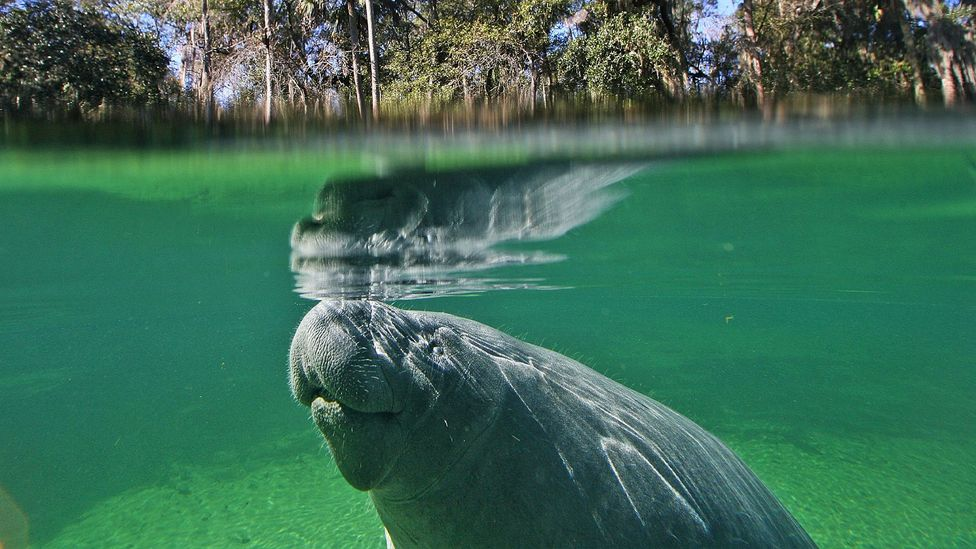Free Courses Sale ends Soon, Get It Now


Free Courses Sale ends Soon, Get It Now



Copyright infringement not intended
Picture Courtesy: https://www.bbc.com/future/article/20240125-a-florida-state-park-reports-a-record-number-of-manatees-gathering-whats-behind-the-convergence
Context: Experts are puzzled by the unprecedented gathering of nearly 1,000 manatees at Blue Spring State Park in Florida, as manatees are typically solitary animals.
Possible reasons for the unprecedented gathering of Manatees
|
It's likely a combination of these factors that is driving the large gathering. The cold weather may be the immediate trigger, but the lack of food and the availability of a safe haven are likely playing a role as well. |
About Manatees
|
PRACTICE QUESTION Q. Which statement is incorrect about manatees? A) They are intelligent and social animals. B) They have poor eyesight but rely on touch and taste. C) They can hold their breath for up to 20 minutes. D) They are carnivores that hunt for fish and shellfish. Answer: D Explanation: Manatees are fascinating aquatic mammals that belong to the order Sirenia. They are often called sea cows because they graze on seagrass and other aquatic plants. One of the statements given about manatees is incorrect. The correct answer is D) They are carnivores that hunt for fish and shellfish. Manatees are herbivores that do not eat any animal matter. They have a simple stomach and a large intestine that helps them digest the tough plant fibres. Manatees can consume up to 10% of their body weight in plants per day. |
© 2024 iasgyan. All right reserved